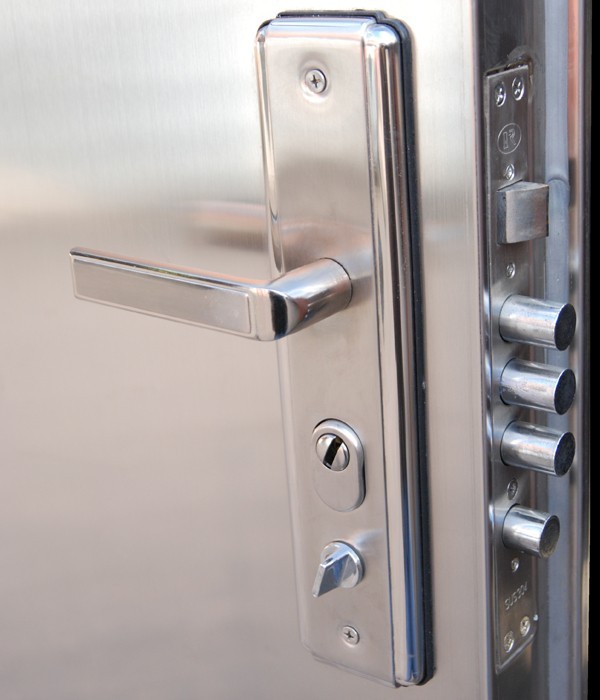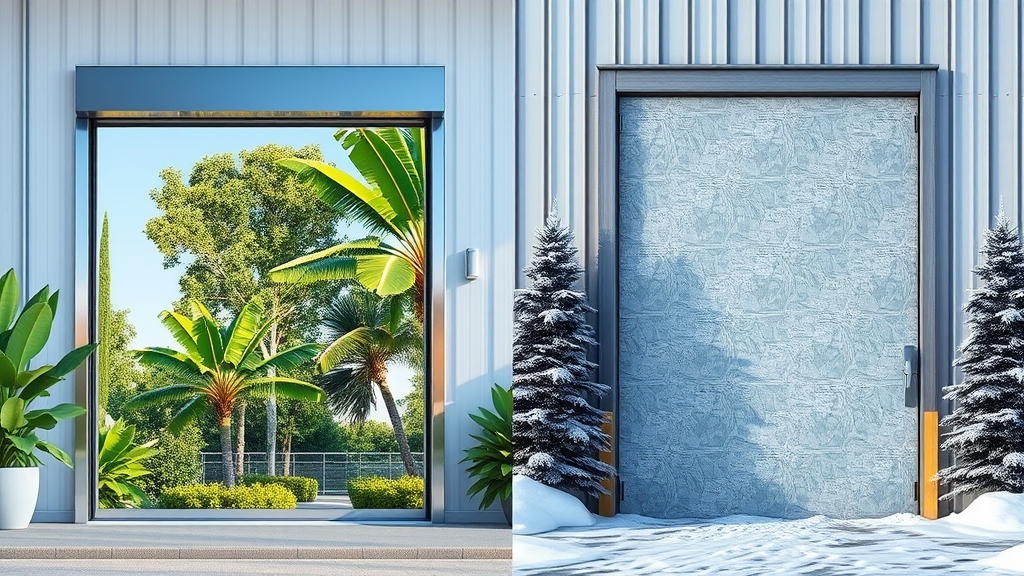In commercial and industrial facilities, your doors are your first defense against everything from brutal weather to security threats and high energy costs. When these critical barriers fail, everything else suffers. These critical barriers require meticulous design, compliant installation, and consistent upkeep to withstand high-traffic use, extreme climates, and evolving safety standards. Drawing on insights from facility managers and engineers, this guide helps you find the right balance of durability and efficiency. Let’s learn how to make that happen.
Designing Durable Commercial Facility Doors: Materials and Structural Integrity
The lifespan of industrial doors depends on material choice and engineering. For high-traffic zones like loading docks, galvanized steel remains the gold standard due to its unmatched strength and corrosion resistance. A Midwest automotive plant manager shared that switching to steel doors with foam-insulated cores 1 cut their annual heating costs by 18% while withstanding daily forklift traffic.

Composite materials like fiberglass work great in chemical plants or coastal facilities where salt accelerates rust. Their lightweight design reduces strain on hardware, though reinforcing frames with welded aluminum joints 1 is critical for heavy-duty applications. For facilities prioritizing speed, high-performance doors with flexible PVC curtains close in under two seconds, cutting heat exchange by 40% during peak logistics hours.
Balancing Compliance and Climate Resilience
Every commercial facility door must meet stringent safety and accessibility benchmarks. Fire-rated steel doors, for instance, require NFPA 101 Section 7.2.1-compliant seals and self-closing mechanisms in hazardous areas. Similarly, ADA mandates a minimum 32-inch clearance for wheelchair access. This is a detail overlooked in a Texas warehouse retrofit resulting in costly post-installation modifications.

Regional climate dictates material success. In hurricane-prone Florida, facilities use impact-resistant laminated glass and reinforced steel frames 3, while Arctic warehouses rely on triple-layer insulated doors to prevent thermal bridging. One Alaskan cold storage operator reported a 30% drop in HVAC costs after upgrading to fiberglass doors with polyurethane cores 1.
Hardware and Installation: Precision Matters
A door’s longevity often depends on overlooked components. Multi-point locks, for example, distribute force across three bolt points to reduce hinge wear. At a Chicago distribution center, installing these locks extended hinge life by 70% despite 200+ daily cycles. Meanwhile, V-Cam hinges (a cam-shaped mechanism that minimizes friction) prevent sagging in heavy steel doors 5.
Proper installation avoids 80% of operational issues. Frames should be anchored directly to studs, with shims used only for alignment, not structural support 6. After a Niagara Falls factory experienced repeated lock jams, technicians discovered undersized door sweeps allowed moisture to warp the threshold. Correcting the sealant gap to ¼ inch resolved the issue, highlighting the need for millimeter-perfect measurements 7.
Proactive Maintenance and Tech-Driven Upgrades
Routine care prevents costly breakdowns. Minnesota’s largest food processor implements biweekly inspections, catching early rust spots on steel doors with a simple vinegar wipe test. Their team replaces silicone gaskets every 18 months, a practice that paid off when an Arctic vortex threatened to freeze door mechanisms, but intact seals maintained seamless operation 8.

Modern IoT sensors now predict failures before they occur. A Pennsylvania aerospace plant reduced unplanned downtime by 22% using radar sensors that alert managers to misaligned tracks 9. Similarly, biometric scanners minimize physical contact with hardware, cutting keypad wear by 90% in high-traffic medical facilities.
Auditing Performance: Metrics That Matter
Facility managers should evaluate doors biannually using three metrics:
- Cycle endurance: High-traffic doors should exceed 50,000 annual cycles without frame fatigue 10.
- Thermal efficiency: Infrared cameras can spot insulation gaps causing energy leaks greater than 15% 11.
- Security response: Test locks against forced entry tools. Grade 1 commercial doors withstand over 5 minutes of attack 12.
Conclusion: Building for the Long Haul
Durable commercial and industrial facility doors demand a science-backed approach. The facilities that nail this understand that the right materials, proper compliance, and smart maintenance turn what most people see as a necessary expense into a genuine reliability asset.
Take corrosion-resistant materials like galvanized steel, for example. Pair that with strict adherence to NFPA and ADA codes, then add some predictive maintenance technology, and you've got doors that actually work for you instead of against you. As one plant supervisor aptly noted,
“A door that lasts 20 years isn’t luck, it’s layered decisions, from the hinge outward.”
Invest in those layers, and your doors will safeguard operations long after the next storm, spill, or boom cycle.
